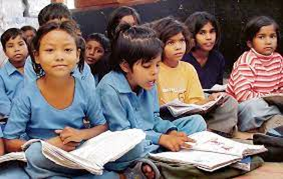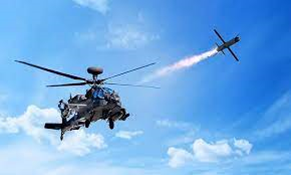Daily News Analysis.
Direct Incentive Disbursement : Postal Life Insurance (GS-3)
News: The Postal Life Insurance (PLI) launched the “Direct Incentive Disbursement” pilot program in the Delhi and Uttarakhand Circles in recognition of the crucial role that its sales staff plays.
The Direct Incentive Disbursement Program will acknowledge the sales force of PLI, which has been instrumental in the success of the department. Around two lakh sales force members, including Gramin Dak Sevaks, Direct Agents, Field Officers, and Departmental Employees, will be impacted across the country.
Incentives are promptly deposited into the Post Office Savings Bank accounts of the sales staff. The sales staff can easily manage their cash, and quick rewards encourage top performance. Automated payouts lower administrative expenses, allowing for a greater concentration on providing customer service.
Insurance for Postal Workers:
It was established on February 1st, 1884, and is currently the nation’s oldest life insurance provider. Initiated as a welfare programme for postal workers, it was subsequently expanded to include staff members of the Telegraph Department in 1888.
Postal Life Insurance (PLI):
On February 1st, 1884, postal life insurance (PLI) was first offered. Initiated as a welfare programme for postal workers, it was subsequently expanded to include staff members of the Telegraph Department in 1888. When no other insurance firm insured female life in 1894, PLI expanded insurance coverage to female employees of the former P & T Department. It is the oldest life insurance provider in the nation.
From a few hundred policies in 1884 to more than 50 Lac policies as of 31.03.2021, PLI has increased significantly through time. It now extends to employees of the Central and State Governments, the Defence and Paramilitary Services, Public Sector Undertakings, Banks, Educational Institutions, Local Bodies, and professionals (such as doctors, engineers, chartered accountants, MBAs, lawyers, etc.) as well as those working for firms that are listed on the National Stock Exchange (NSE) or Bombay Stock Exchange (BSE).
State Of Elementary Education In Rural India 2023 (GS-3)
News: The Prevalence of Smartphone Usage Among Students is highlighted in the State of Elementary Education in Rural India – 2023 report published by the Ministry of Education.
The Development Intelligence Unit (DIU), a partnership between the NGO Transform Rural India and Sambodhi Research and Communications, conducted the survey on which the study was based. 6,229 parents of pupils in rural regions in 21 States, ages 6 to 16, responded to the poll.
Principal Results of the Survey:
- 49.3% of people can access cell phones. 76.7% of parents reported that their kids use their smartphones primarily for playing video games, showing a preference for leisure over academic pursuits.
- Additionally, 47.3% of students download music, while 56.6% download films to watch on their smartphones.
- However, only 34% of students use their smartphones for academic purposes, and only 18% use tutorials to access online learning. Access to smartphones varies according to class level.
- Even younger pupils (Classes I-III) demonstrate significant access to smartphones (58.32%), as do students in upper classes (Class VIII and above).
- This shows that smartphone entertainment consumption is widespread across age groups, which could affect how engaged students are in their academic work.
- 78% of parents want their kids to finish high school or get a college degree, but there is a lack of parental involvement.
- Only 40% of parents talk to their kids every day about what they are learning in school, while 32% do so a few days a week.
- Girls’ parents reported that 36.8% of the time, their daughters dropped out of school because they had to work to support the family.
- While 21.1% thought family duties were a factor in the dropout, 31.6% blamed their child’s lack of interest in education.
According to 71.8% of respondents, the main reason why males dropped out of school was a lack of interest in their studies, while 48.7% mentioned the need for boys to support their families financially. Parents reported regular attendance in 84% of cases.
Additionally, 40% of parents said that there were additional age-appropriate reading materials available than textbooks, underscoring the need for more resources to aid kids’ at-home learning.
New Education Policy (NEP) 2020:
The Ministry of Human Resource Development, soon to be known as the Ministry of Education, recently released the National Education Policy (NEP) 2020. The policy aims to adapt India’s educational system to the demands of the twenty-first century.
The new policy aims to improve the subpar reading and numeracy results associated with primary schools, lower the middle and secondary school dropout rates, and implement a multidisciplinary approach in higher education.
In addition to this, the policy emphasizes early childhood care, curriculum and pedagogy change, revising exams and assessments, and investing in teacher preparation and broadening their evaluation. The success of the NEP 2020, which aims to transform India’s educational system on all levels, hinges on the initiative and methods used to carry it out.
31st World University Games:
News: India earned the most medals at the World University Games with a total of 26 across 4 disciplines at the 31st annual event, which was held in Chengdu, China.
The Target Olympic Podium Scheme (TOPS) and Khelo India Scheme have produced a large number of medal-winning competitors. The World University Games had to be conducted in 2021 after being postponed twice owing to the Covid-19 pandemic.
World University Game, sometimes referred to as “Universiade,” is a worldwide multisport competition held especially for college players. The International University Sports Federation (FISU) is in charge of organizing it. The regulatory body that manages and plans the Universiade competitions is called FISU.
In addition to organizing the host cities, FISU is in charge of making sure that the games are carried out in conformity with the organization’s values and rules. A wide variety of sports akin to those found at the Olympic Games are featured at the Universiade, which is held every two years. Both the summer and winter versions are included.
The winter Universiade contains sports like skiing, ice hockey, figure skating, and others, whereas the summer Universiade normally includes activities like athletics, swimming, basketball, soccer, and more.
About International University Sports Federation: The International University Sports Federation has been a major force in advancing the stature and scope of collegiate athletics worldwide since its foundation in 1949. According to FISU, practizing sports and adhering to sports principles complement academic study in the most seamless way possible.
Students all throughout the world can participate in sports thanks to FISU. Sport gives students the health, happiness, and experiences they need to become contributing members of our global society.
According to this proverb, FISU organizes prestigious sporting and educational competitions with the goal of giving university students the chance to interact and exchange ideas with peers from around the globe in a friendly yet competitive setting. With the FISU Global Strategy 2027, FISU has developed objectives for achieving this as well as a plan for doing so.
Indian Air Force Received Israel’s Anti Guided Missiles (GS-2)
News: Israel’s Spike non-line of sight (NLOS) anti-tank guided missiles have been delivered to the Indian Air Force.
The Russian-made Mi-17V5 helicopter fleet will incorporate the Spike NLOS. Israel’s Rafael Advanced Defence Systems Ltd. created the Spike Non-Line of Sight (NLOS) weapon. A versatile electro-optical/infrared missile system is called Spike NLOS. It is an anti-tank and anti-personnel missile that is fired and forgotten. Up to 32 km of range.
It can be integrated with platforms that are on land, in the air, or at sea. Without a line of sight, it has the capacity to attack distant or covertly located targets. Line of sight (LOS) in missile guidance refers to the path that a missile takes to reach its target.
Throughout the missile’s flight, the seeker and wireless datalink of the weapon give controllers access to real-time visual images and man-in-the-loop control. This gives operators the chance to change or cancel the mission while travelling to the target. The Israeli-built Spike missile has a tremendous range and can eliminate enemy objectives that are concealed behind mountains.
Indian Air Force: The 1948 invasion of J&K by Pakistan resulted in the IAF’s first campaign, which was successful from the start. The IAF was instrumental in this. Air power was not employed in the Indo-China War of 1962. Therefore, we took the hit. Although there was a bit less coordination when air power was utilized in the 1965 Indo-Pakistan war, it nevertheless had a significant impact. India achieved total air superiority in 1971 thanks to our 12 to 14 F 86 Sabre aircraft, which made a difference.
There are many tiny river tributaries in East Pakistan, or what is now Bangladesh. These rivers were difficult to cross. The IAF overcame this by giving a significant amount of helo assistance. Air power was used effectively in the 1999 Kargil conflict. This was the first time in the history of air power when weapons were accurately deployed from such heights. It was a huge accomplishment for the IAF to do something that no other air force had ever done before.
Rhesus Macaques : Recent Study (GS-2)
News: The traditional wisdom of same-sex behavior (SSB) in animals has been called into question by a new study by scientists from Imperial College London. The study, “Genetics, Social Environment and Evolution of Male Same-Sex Behavior in Rhesus Macaques,” has as its title.
The involvement of animals in SSB has been referred to as a “Darwinian paradox” since, if reproduction is essential for evolution, SSB, which is not reproductive, ought to have vanished. According to a recent study, rhesus macaque male SSB is quite widespread and has no negative effects on evolution.
Principal Findings of the Study-
- The study focuses on the male same-sex mounting activity seen in rhesus macaques, a very common monkey species, on the island of Cayo Santiago, which is located east of Puerto Rico.
- 72% of the male rhesus macaques that were observed were mounting. Only 46% of people mounted someone of a different sex.
- It contests the idea that SSB’s lack of sexual reproduction makes it incompatible with evolution’s guiding principles.
- The study takes into account extraneous elements like the environment and social interactions.
- These environmental factors play a role in how male rhesus macaques show SSB behavior. Monkeys participating in SSBs band together to fight shared foes.
- Male SSB might be used to regulate and communicate emotions. The study challenges the notion that SSB diminishes prospects for conception because sexually active guys engage in both SSB and DSB.
- There is no clear link between SSB participation and a decline in the number of offspring in the macaque population.








